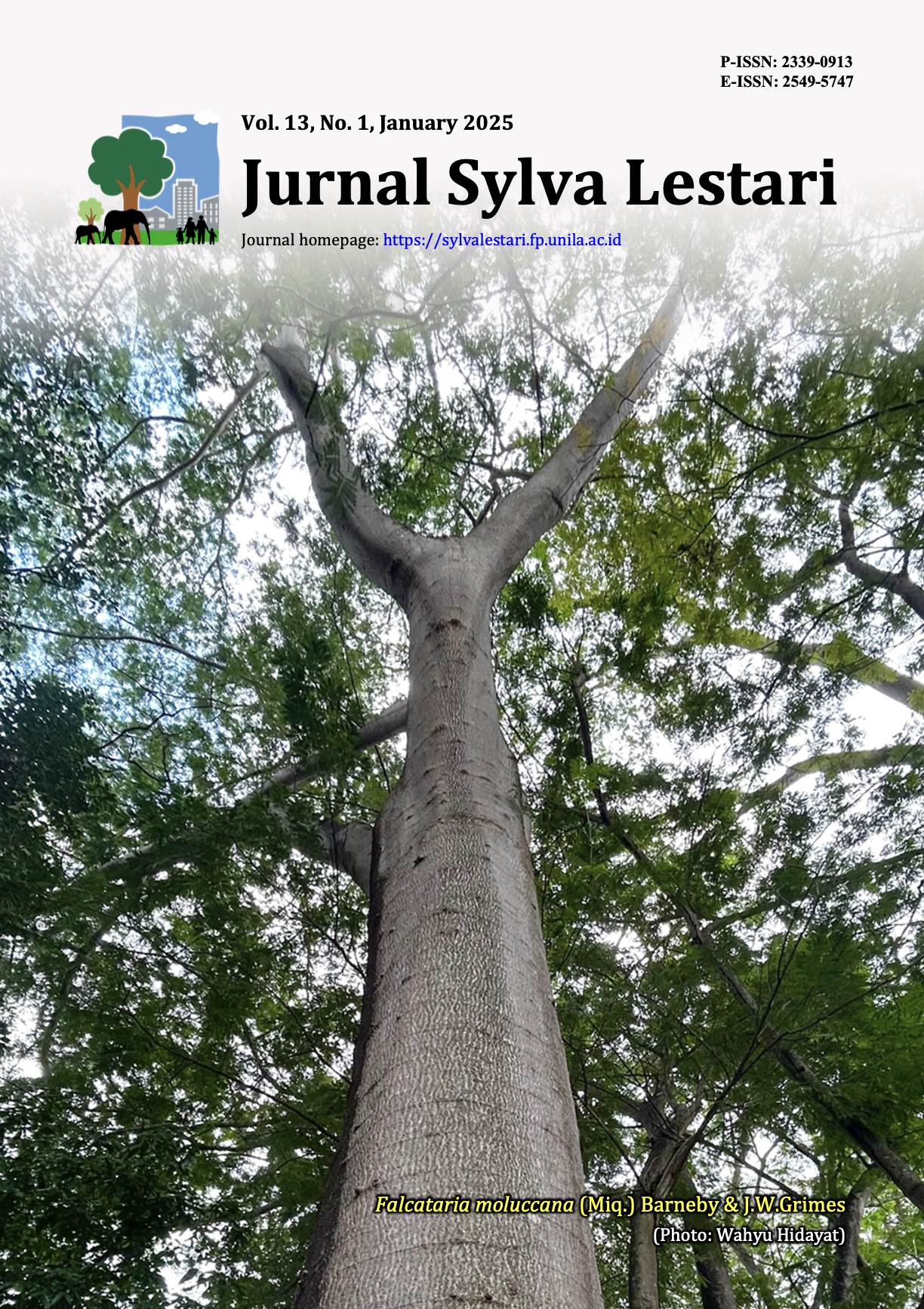Carbon Storage Potential and Economic Valuation in the Arboretum of Forest Area with Special Purpose (KHDTK) Aek Nauli, Indonesia
DOI:
https://doi.org/10.23960/jsl.v13i1.1057Abstract
Sustainable forest management is expected to significantly contribute to preventing climate change and supporting the achievement of the Forestry and Other Land Use (FOLU) Net Sink 2030. This study aims to determine the potential for biomass storage and carbon and economic valuation in the Arboretum of Forest Area with Special Purpose (KHDTK) Aek Nauli, North Sumatra, Indonesia. This study used systematic sampling with random start as an inventory method. The estimation of above-ground carbon uptake used general allometric equations and benefit transfer methods for the economic value of carbon. This study found 62 species of woody plants with 5 species classified as endangered according to the International Union for Conservation of Nature (IUCN) Red List of Threatened Species, namely Agathis dammara, Dryobalanops aromatica, Tectona grandis, Pinus merkusii and Saurauia bracteosa. There are 734 individuals of woody plants, including 84% in the tree phase and 16% in the pole phase, with dominant species in both phases, namely Pinus merkusii and Schima wallichii. Potential biomass and carbon stocks in the pole phase were 4.76 tons/ha and 2.24 tons/ha, respectively, while in the tree phase were 338.69 tons/ha and 159.19 tons/ha. The total estimated carbon sequestration reached 592.42 tons.CO2e/ha. Carbon stocks’ total potential economic value is IDR 2,578,832,243 (USD 164,100). Therefore, the Arboretum of KHDTK Aek Nauli is considered to have the potential to support the achievement of the FOLU Net Sink 2030 target. It is expected that the potential economic value of carbon can be converted into real value and optimized through a carbon trading scheme to offset greenhouse gas emissions and support the sustainable management of KHDTK Aek Nauli.
Keywords: benefit transfer, biomass, carbon trade, climate change mitigation, economic potential
Downloads
Downloads
Published
How to Cite
Issue
Section
Statistics
 Abstract views: 536 times
Abstract views: 536 times PDF downloaded: 421 times
PDF downloaded: 421 times
Metrics
License
Copyright (c) 2025 Nur Ramadhani, Rezky Lasekti Wicaksono, Rissa Rahmadwiati

This work is licensed under a Creative Commons Attribution-NonCommercial 4.0 International License.
Authors retain copyright and grant the journal right of first publication with the work simultaneously licensed under a Creative Commons Attribution-NonCommercial 4.0 Licence that allows others to share the work with an acknowledgement of the work's authorship and initial publication in this journal.
Authors are able to enter into separate, additional contractual arrangements for the non-exclusive distribution of the journal's published version of the work (e.g., post it to an institutional repository or publish it in a book), with an acknowledgement of its initial publication in this journal.
Authors are permitted and encouraged to post their work online (e.g., in institutional repositories or on their website) prior to and during the submission process, as it can lead to productive exchanges, as well as earlier and greater citation of published work (See The Effect of Open Access).









